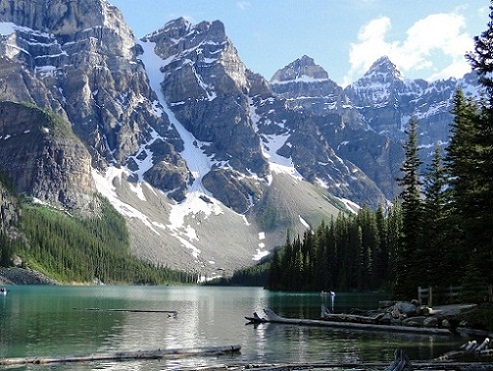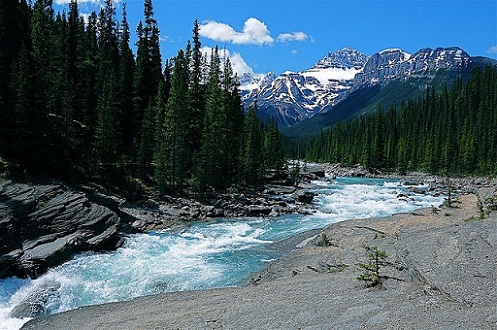There is a region in Canada ideal for those seeking rural and adventure tourism. This is the region of icefields parkway, one of Canada's national treasures and most rewarding destinations.
It encompasses an area of 232 km2 through the heart of the Canadian Rockies that offers access to a vast wilderness of pristine mountain lakes, ancient glaciers and wide deep valleys that lie between the Provinces of Alberta and British Columbia.
And among the best destinations in this region we have:
Lake Hector
The beautiful green waters of the lake are found among a lush forest surrounded by rugged mountains which is typical of a lake formed in a glacial basin. There you can see Mount Balfour and the Waputik Range to the southwest. The lake is located 214 km (133.75 miles) south of Jasper and 16 km (10 miles) north of Lake Louise.
Kefrén Lake
This sparkling lake is surrounded by a mountain backdrop of Mount Khafre's glaciers that is visible from the lake's shores. This is an ideal site for observing wildlife including elk and elk.
Moraine Lake and the Valley of the Ten Peaks
It is an emerald green lake set against a backdrop of sharp peaks. To the north is the Temple Mount, the highest mountain in the Arch Range and the third highest in Banff National Park. Canoe rentals are available on the lake. Moraine Lake is accessible 12 km (7,5 miles) east of the Lake Louise Access Road.
Lake of the Landslides
It is so named because it appears to have formed when a river was closed by a landslide. However, a source has never been found. The region includes Whirlpool - a tall piece of land that juts into the North Saskatchewan River Valley and causes the river to change direction.
Bow Lake
Bow Lake is the source of the Bow River. Across the lake is part of a large ice field that covers an area of the Great Dividing Range. The arch glacier extends from this field into the cliffs. The lake is located about 93 km (58 miles) north of Banff, along Highway 93 North.
Mistaya River
This 38 km (24 miles) long river begins at Peyto Lake and eventually joins the North Saskatchewan River. A strong river whose waters have sculpted the Mistaya Canyon.

